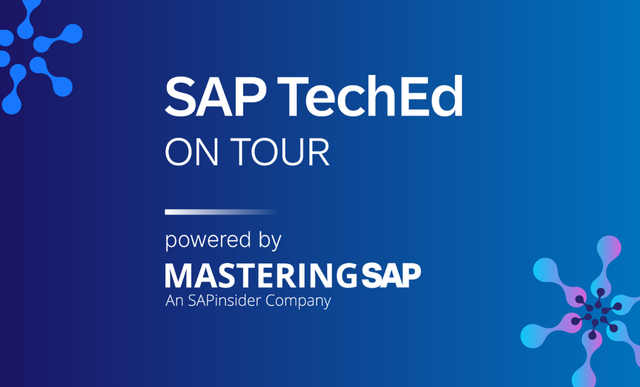Retail and eCommerce
Filter By
Browse By
- SAP Analytics and AI
- SAP Application Development and Integration
- All SAP Application Development and Integration
- SAP ABAP
- SAP ABAP Development Tools
- SAP ABAP Test Cockpit
- SAP API Management
- SAP BAPI
- SAP Basis
- SAP BRF
- SAP Business Application Studio
- SAP CMS
- SAP Design Studio
- SAP Development Tools
- SAP DevOps
- SAP EAI
- SAP EDI
- SAP Extension Suite
- SAP Fiori
- SAP Fiori Elements
- SAP Integration Suite
- SAP Low Code Application Development
- SAP Low Code Automation
- SAP Netweaver
- SAP Release Management
- SAP UI5
- SAP Web Application Server
- SAP Web IDE
- SAP Business Process Management
- SAP Center of Excellence
- SAP CIO
- SAP Customer Experience
- SAP Data and Data Management
- All SAP Data and Data Management
- SAP BW
- SAP BW/4HANA
- SAP Crystal Reporting
- SAP Data Archiving
- SAP Data Center
- SAP Data Governance
- SAP Data Integration
- SAP Data Migration
- SAP Data Quality
- SAP Data Services
- SAP Data Strategy
- SAP Data Visualization
- SAP Data Warehouse Cloud
- SAP DMS
- SAP Document Control
- SAP EIM
- SAP ETL
- SAP ETL Tools
- SAP HANA
- SAP HANA Administration
- SAP HANA Deployment Infrastructure
- SAP HANA Studio
- SAP Master Data
- SAP Master Data Governance
- SAP MDM
- SAP Enterprise Architect
- SAP Enterprise Asset Management
- SAP ERP
- SAP Finance
- All SAP Finance
- SAP Accounting
- SAP AR AP
- SAP Asset Accounting
- SAP Billing Systems
- SAP BPC
- SAP BRIM
- SAP Cash Management
- SAP Central Finance
- SAP Controlling
- SAP COPA
- SAP Cost Center Accounting
- SAP e-invoicing
- SAP FICO
- SAP Finance Automation
- SAP Financial Closing Cockpit
- SAP Financial Consolidation
- SAP Financial Planning
- SAP FX Risk
- SAP General Ledger
- SAP Global Tax Management
- SAP Hyperion
- SAP Order to Cash
- SAP Payment Processing
- SAP Profitability Analysis
- SAP Rebate Management
- SAP S/4HANA Finance
- SAP Universal Journal
- SAP Governance Risk and Compliance
- SAP Human Capital Management
- SAP Intelligent Technologies
- SAP Platform and Technology
- All SAP Platform and Technology
- SAP Business Technology Platform
- SAP Cloud Connector
- SAP Cloud Integration Platform
- SAP Cloud Migration
- SAP Cloud Platform
- SAP Cloud Providers
- SAP Cloud Strategy
- SAP Container Platform
- SAP Digital Asset Management
- SAP Digital Integration Hub
- SAP Digital Signature
- SAP HANA Enterprise Cloud
- SAP HEC
- SAP Hyperscalers
- SAP Infrastructure
- SAP Messaging
- SAP Smart Forms
- SAP Quality and Testing
- SAP Security
- SAP Spend Management
- SAP Supply Chain Management
- All SAP Supply Chain Management
- SAP APO
- SAP Asset Management
- SAP Business Network
- SAP Digital Manufacturing Cloud
- SAP Digital Twin
- SAP EWM
- SAP IBP
- SAP Inventory Management
- SAP Label Printing
- SAP Logistics
- SAP Manufacturing
- SAP Manufacturing Automation
- SAP MES
- SAP MII
- SAP MM
- SAP MRO
- SAP MRP
- SAP Order Management
- SAP Plant Maintenance
- SAP PLM
- SAP Production Planning
- SAP S&OP
- SAP SD
- SAP SPM
- SAP Supply Chain Planning
- SAP Track and Trace
- SAP Transportation Management
- SAP System Administration
Retail industry encompasses small businesses and chain stores of all sizes. These businesses sell consumer products directly to individual consumers. Within retail, there is extensive classification, depending on the specialty or type of retailer. Segmentation may be by product being retailed (ex: apparel, furniture, electronics, grocery etc.) or channel of distribution (ex: supermarkets, convenience stores, specialty stores etc.).
In U.S, retail jobs are the most common occupation, as per Census.gov, with approximately 7% of U.S population employed in retail frontline operation. Conventional brick and mortar format of retail has been disrupted in the 21st century by the rise of electronic commerce, popularly known as ecommerce.
Ecommerce takes buying and selling of products and services online, thereby significantly disrupting the traditional retail model. Due to the increasing adoption of ecommerce in end consumers, which exploded exponentially during the pandemic, traditional retailers are increasingly adopting the ecommerce model and hence creating an omnichannel strategy.
Technology in Retail and Ecommerce
Retail industry encompasses small businesses and chain stores of all sizes. These businesses sell consumer products directly to individual consumers. Within retail, there is extensive classification, depending on the specialty or type of retailer. Segmentation may be by product being retailed (ex: apparel, furniture, electronics, grocery etc.) or channel of distribution (ex: supermarkets, convenience stores, specialty stores etc.).
In U.S, retail jobs are the most common occupation, as per Census.gov, with approximately 7% of U.S population employed in retail frontline operation. Conventional brick and mortar format of retail has been disrupted in the 21st century by the rise of electronic commerce, popularly known as ecommerce.
Ecommerce takes buying and selling of products and services online, thereby significantly disrupting the traditional retail model. Due to the increasing adoption of ecommerce in end consumers, which exploded exponentially during the pandemic, traditional retailers are increasingly adopting the ecommerce model and hence creating an omnichannel strategy.
Technology in Retail and Ecommerce
While ecommerce is entirely a product of technology, retail industry has not been a stranger to technology either. Likes of Walmart leveraged technology decades ago to build business models that destroyed competitors like K-mart. Technology plays a key role in retail value chain, from core supply chain activities ranging from inbound logistics to last mile delivery, to support activities like procurement, marketing, financial planning, people and resource management, merchandizing, assortment planning etc. On the ecommerce side, in addition to the platforms that support ecommerce and the supply chain components, technology adds value in areas like web analytics, assortment planning, personalization, recommendations etc.
SAP has a rich portfolio of solutions that support retail and ecommerce, branded as omnichannel retail. While its SAP S/4HANA product has customized retail industry features, like merchandize management, a plethora of other technologies like SAP intelligent returns management, SAP commerce cloud, SAP Ariba, SAP CX etc. support key omnichannel retail operations like marketing and customer experience, merchandizing, sourcing, and procurement, financial planning, omnichannel retail and store operations. SAP partner ecosystem also has a rich portfolio of partners like DataXstream, which helps retailers and wholesalers develop robust omnichannel capabilities.
Key Considerations for SAPinsiders
This article shares how Walgreens Boots Alliance (WBA) launched a transformation initiative designed to modernize the company’s core business processes to give employees better access to data in real-time at all levels of the organization. The initiative began as a program to replace its custom legacy ERP system with SAP S/4HANA at its 9,000 stores worldwide but soon turned into a full-scale transformation of WBA’s business.
This article discusses how breakthrough beverages expedited the transformation of its distribution operations leveraging ecommerce and SAP technology. Breakthrough was able to move fast and adapt to changing demand patterns because of end-to-end SAP Commerce Cloud and SAP Customer Data Cloud solutions, as well as SAP ERP Central Component (ECC) for ERP, which has helped them tremendously in meeting customer demand.
34 results
-

A Roadmap to the Digital Retailing Era
Published: 10/November/2017
Reading time: 10 mins
Ken Murphy, SAPinsider: This is Ken Murphy with SAPinsider. The evolution of technology and digital transformation is having a tremendous impact across industry types, but perhaps nowhere are these forces having a greater impact than retail and fashion. Traditional methods of selling goods and products to end consumers are quickly being replaced by omnichannel offerings…
-

Why You Need eCommerce Integration
Published: 20/October/2017
Reading time: 3 mins
The process of buying and selling online has grown substantially in the past several years. eCommerce is now — or should be — top of mind for merchants, entrepreneurs, and retailers everywhere. But with selling online comes the tedious task of maintaining records and data such as orders, invoices, inventory, shipping updates, customer information, and so…
-

Real-Time Insights for Real-Time Decision Making
Published: 16/August/2017
Reading time: 3 mins
Machine learning is a compelling opportunity for businesses to make intelligent business decisions based on instant, data-driven insights, and retailers are finding this technology to be a natural fit. Machine learning enables retailers to connect fashion trends to actual sales and inventory levels using predictive analytics, ensuring that they always have the right items in…
-
-

Total Retail: Reshaping Your Operating Model to Respond to the Needs of Connected Consumers
Published: 28/June/2016
Reading time: 6 mins
In the retail industry, it is important to be agile enough to meet the ever-changing demands of your customers or risk losing them to your competitors. With the rise of the digital age and the 24/7 demands of consumers, companies must completely renovate their operating models to keep up with the pack. Read this article…
Featured Experts
-

Ingo Hilgefort
VP Business Analytics at Rizing
-

Chris Rae
Founder & Chief Architect, DalRae Solutions
-

Become a Member
Unlimited access to thousands of resources for SAP-specific expertise that can only be found here.
Upcoming Events
-

SAP TechEd on Tour, powered by Mastering SAP
November 12 - 14, 2025
Sydney, New South Wales
Australia
View Event
Related Vendors
Your request has been successfully sent

